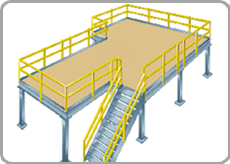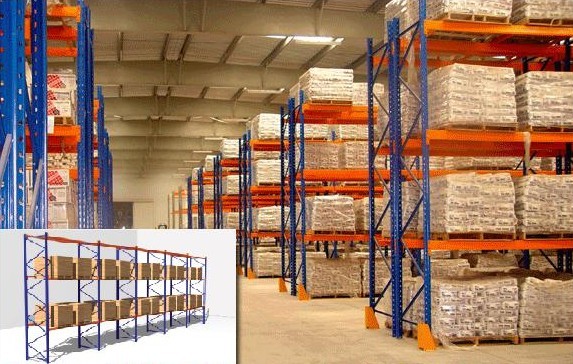Selective
Selective Pallet Racking is the most common pallet racking system in use today. It is an efficient system for storing pallets one deep from the aisle while utilizing the vertical space. This system allows easy access to the product stored at all times which is important if the inventory is in constant need of restocking. Its strength, among other things, prevents compression damage to the stored goods.
Selective Pallet Rack systems are frequently used in a “big-box” distribution application, as well as in retail store inventory rooms, cold storage applications, wholesale stores, etc.
Selective Racking systems typically consist of:
Braces: A piece of steel is welded between two upright columns to form selective upright frames. The brace may be bolted to the columns in some cases.
Frames: Holes or slots are punched in the frame at standard intervals so the load beams can be mounted into the upright frame.
Load beams (also called step beams or box beams): the “step” in step beam is used to hold the load support components such as pallet supports or wire decks. The “Box” in box beam has four flat sides like a box to mount onto the upright frame.
Pallet supports: Are channels that are installed front to back between the load beams to support pallets.
Wire decking: Used as a safety measure to prevent pallets or the products stored on them from falling through the rack structure. The Wire mesh allows for easy recognition of product stored on the shelf and prevents dirt from compiling on the shelves due to the holes in the mesh.
Footplates: Gives the rack more stability: anchor bolts are then inserted through the footplate holes to attach the column to the concrete floor.
Shims: The shims are installed beneath the uprights to level the rack when resting on uneven floors.












 Loading ...
Loading ...

